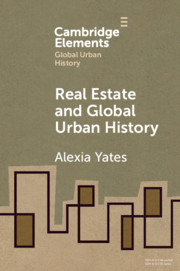Element contents
Real Estate and Global Urban History
Published online by Cambridge University Press: 19 June 2021
Summary
- Type
- Element
- Information
- Series: Elements in Global Urban HistoryOnline ISBN: 9781108850551Publisher: Cambridge University PressPrint publication: 26 August 2021
References
- 20
- Cited by

